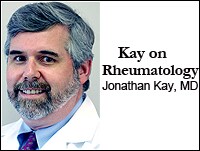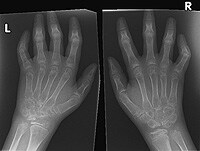safety-lane.com 07105
chiropractic-lane.blogspot.com
Please let me explain that Medscape is a leading voice in the medical community. It is a source for all cutting-edge research and explanation to all practitioners to learn what is happening in all areas of medicine and public health.
CAM for Arthritis: Is There a Role?
Sep 25, 2013
Topic Alert
“Osteoarthritis” is already on your Topic Alert list.
Editor’s Note:
The Centers for Disease Control and Prevention estimates that up to 50 million US adults have some form of arthritis, including one half of those older than 65 years. With lifestyle modification and pharmacotherapies often only providing partial relief, many patients turn to complementary and alternative medicine (CAM) therapies, despite the limited efficacy and safety data on many such approaches. Medscape recently asked rheumatologists Nathan Wei, MD, and Jonathan Kay, MD, to participate in the following email debate exploring what CAM data do exist and addressing the role of alternative treatments in the management of arthritic conditions.
The Centers for Disease Control and Prevention estimates that up to 50 million US adults have some form of arthritis, including one half of those older than 65 years. With lifestyle modification and pharmacotherapies often only providing partial relief, many patients turn to complementary and alternative medicine (CAM) therapies, despite the limited efficacy and safety data on many such approaches. Medscape recently asked rheumatologists Nathan Wei, MD, and Jonathan Kay, MD, to participate in the following email debate exploring what CAM data do exist and addressing the role of alternative treatments in the management of arthritic conditions.
Your Patient’s Taking What?
Dr. Wei: My patients ask me about any number of CAMs on a daily basis. The ones they ask about most frequently are glucosamine sulfate/chondroitin sulfate, chiropractic, anti-inflammatory herbs, yoga, and acupuncture.
The data on glucosamine sulfate/chondroitin sulfate are mixed, and its use remains controversial. Nonetheless, many patients continue to take it, and many report excellent outcomes. Although some assume the National Institutes of Health (NIH) GAIT trial[1,2] might have put the nail in the coffin of this preparation, after looking at the results of the study (particularly in the moderate to severe cases), I’m not so sure. I am probably not the best person to refute its benefits, because I take it myself — hedging my bets, so to speak.
Chiropractic is a CAM that the American Medical Association called “snake oil” — until a Supreme Court ruling came down in favor of the chiropractors. There’s little question in my mind that chiropractic works, particularly for acute musculoskeletal pain. Also, chiropractors know musculoskeletal anatomy better than most rheumatologists.
The beneficial effects of anti-inflammatory herbs and supplements have been demonstrated in multiple studies.[3-43] Although these effects appear to be relatively modest, they seem to be effective.
Yoga is an excellent CAM that I would refer to as a “body/mind experience.” In addition to flexibility, stretching, and breathing, there is also a mental aspect to it that seems to trigger endorphin release.[44]My wife got me into yoga 2 years ago, and I look forward to each session. It complements vigorous exercise, which I engage in regularly.
Acupuncture is another CAM that has its advocates. Although acupuncture has yielded mixed results in studies,[45-48] I think that it is helpful in some cases of musculoskeletal pain. In the hands of a skilled practitioner, acupuncture appears to be less toxic than the pharmaceutical alternative.
via Blogger http://chiropractic-lane.blogspot.com/2013/10/medscape-supports-chiropractic-for.html



Recent Comments